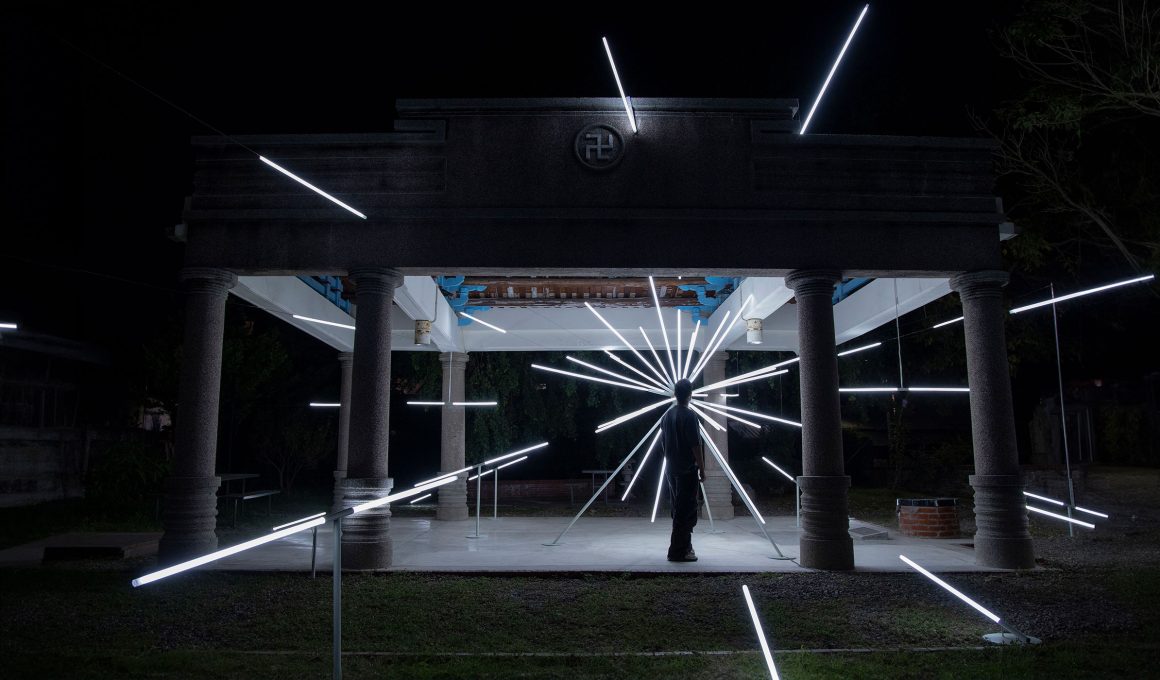Light, in its ethereal nature, has long held spiritual significance, particularly within Buddhism where it symbolizes enlightenment and the unveiling of truth. This symbolism takes on a powerful new form in “Halo,” the latest hyper-site-specific installation by Malaysian light artist Jun Ong. Situated within the Xiu De Bai Pavilion, a former Buddhist temple nestled in the historic Taiwanese town of Yan Shui, Tainan, “Halo” transforms the sacred space into a portal of light and history.
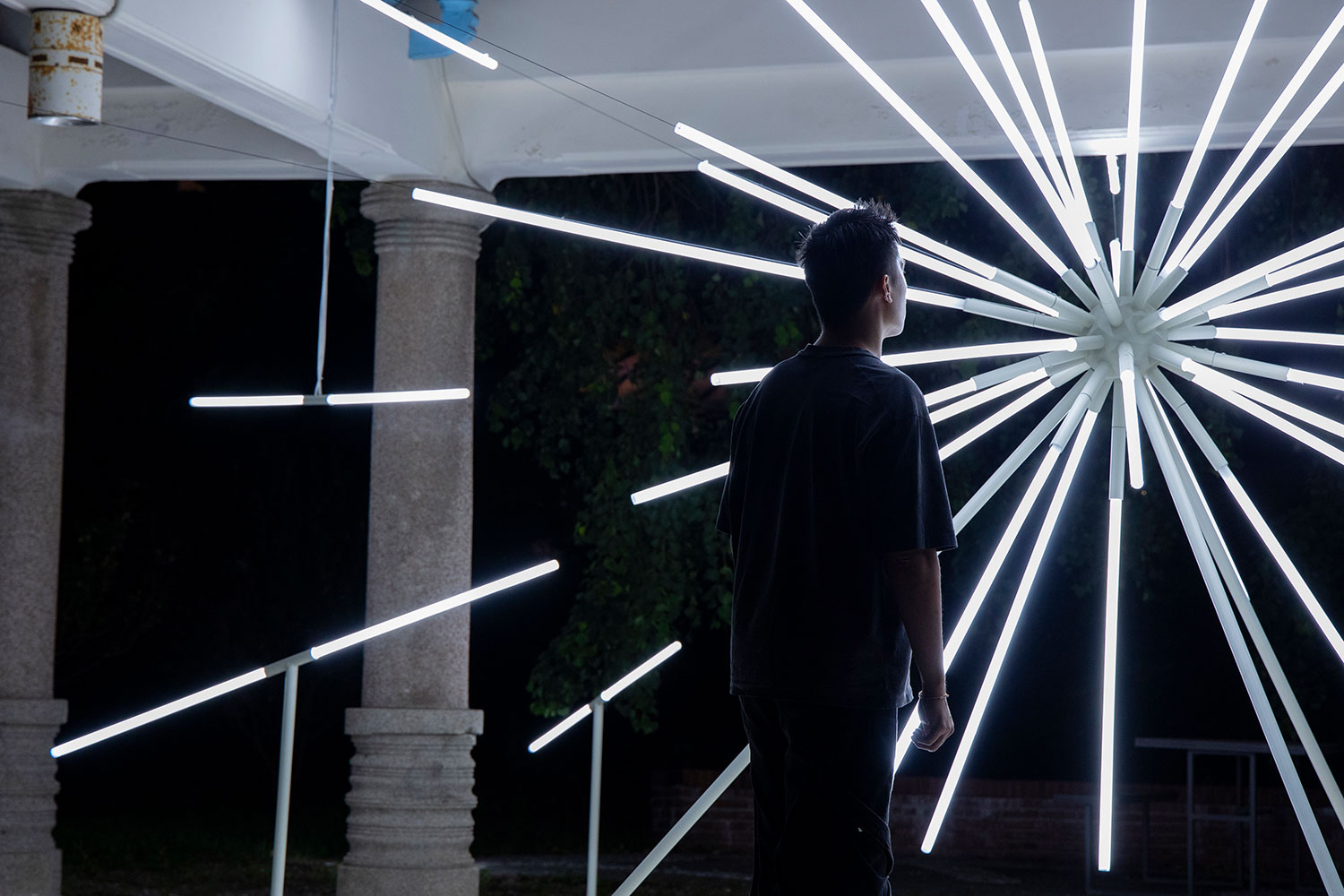
The pavilion itself, built in 1919 with roots stretching back to the Qing dynasty, serves as both canvas and inspiration for Ong’s work. The artist masterfully reimagines the traditional halo – often depicted around sacred figures like Buddha – as a dynamic starburst. This radiant form not only celebrates the pavilion’s intricate architecture but also honors its deep-rooted connection to the surrounding community.
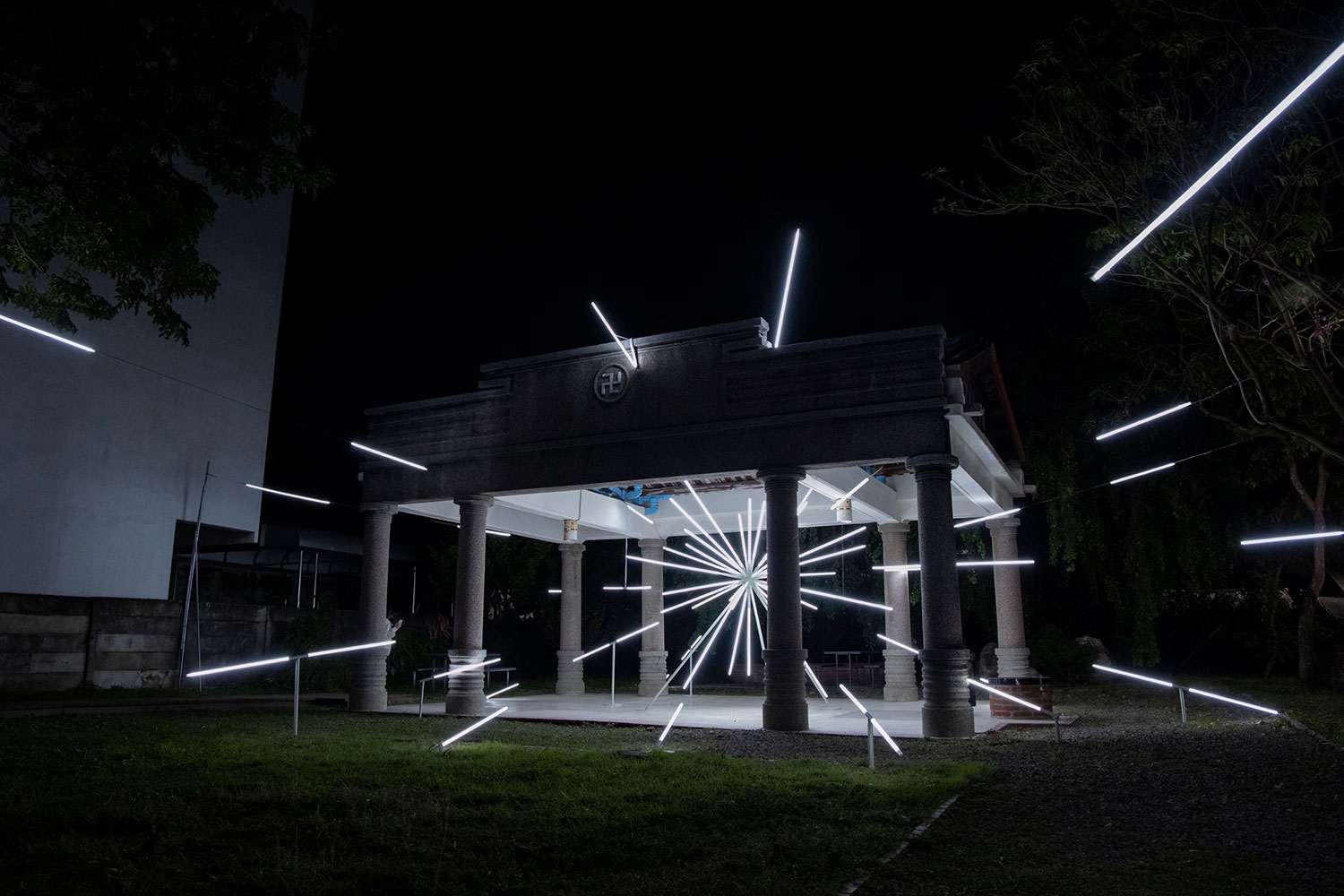
“Halo” is more than just a visual spectacle; it’s an immersive experience. Dynamic yet pure streaks of light emanate from the installation, creating an intangible aura that invites viewers to contemplate the past. The deconstructed design, with its intimate illumination around each light tube, unveils forgotten and unseen details within the temple, offering a fresh perspective on its historical fabric. The installation effectively becomes a time machine, its light acting as a bridge between eras.
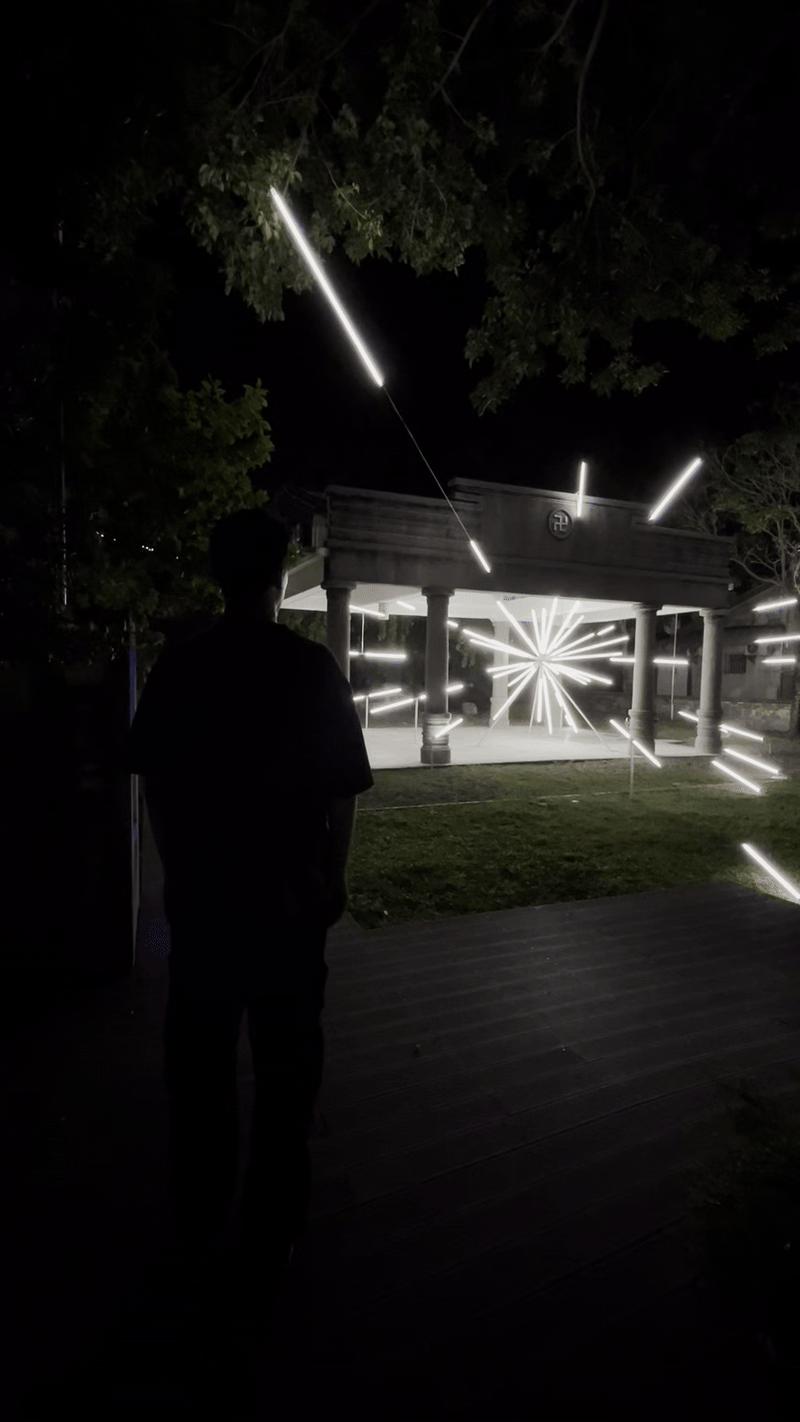
Ong’s artistic process is deeply intertwined with the specific context of the Xiu De Bai Pavilion. By drawing inspiration from the building’s history as a cornerstone of the community, “Halo” becomes a testament to the enduring power of place. The work also echoes Ong’s previous creation, “Star/KL,” demonstrating a continued exploration of light as a medium for spatial and temporal exploration.
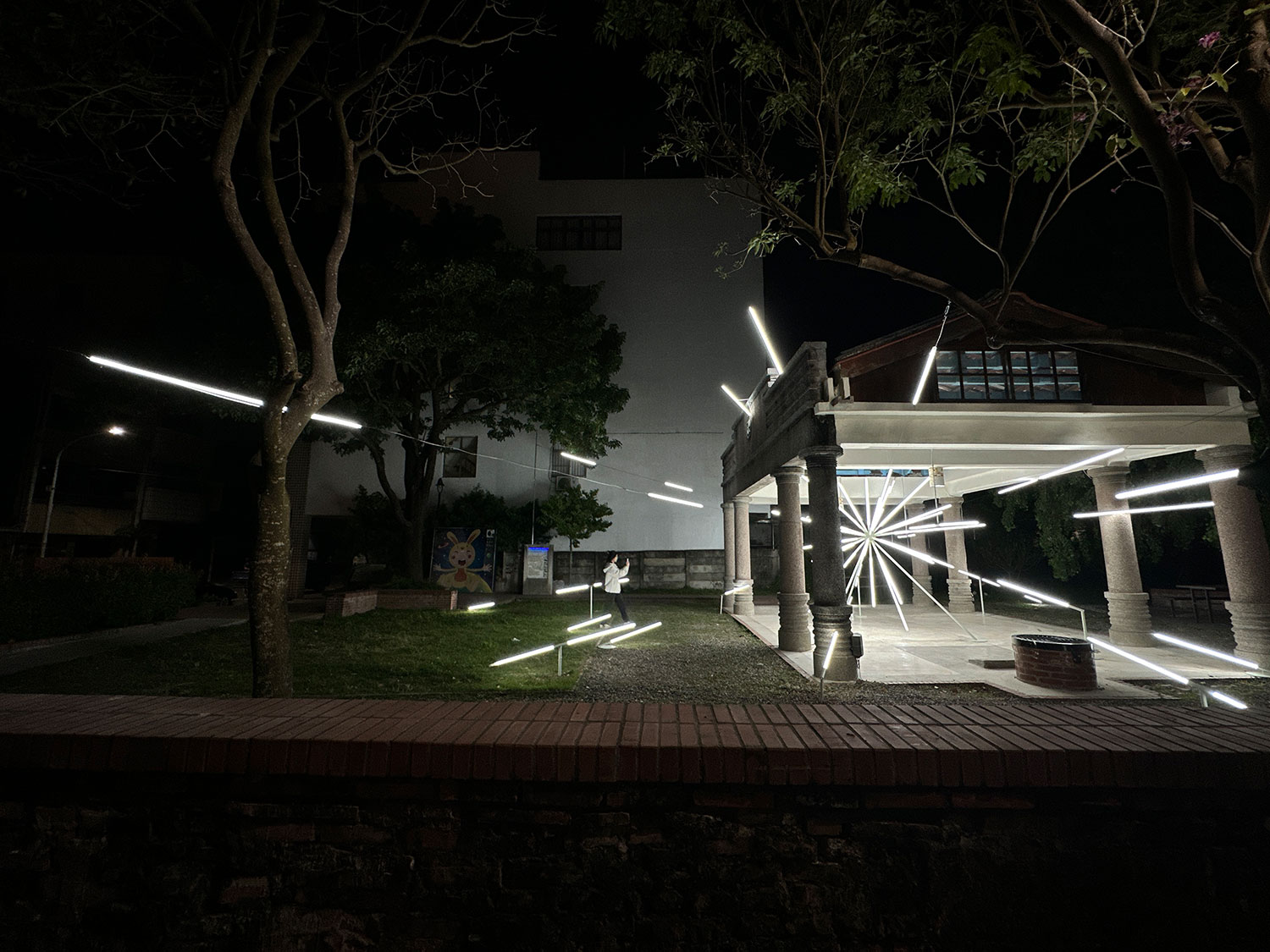
Commissioned by the Yuejin Art Museum for the 2024 Yuejin Art Museum Festival, “Halo” stands as a testament to the power of art to revitalize historical spaces. It invites visitors to not only witness a stunning display of light but also to engage with the rich history and spiritual significance of the Xiu De Bai Pavilion, experiencing a moment of enlightenment amidst a starburst of illuminated history.
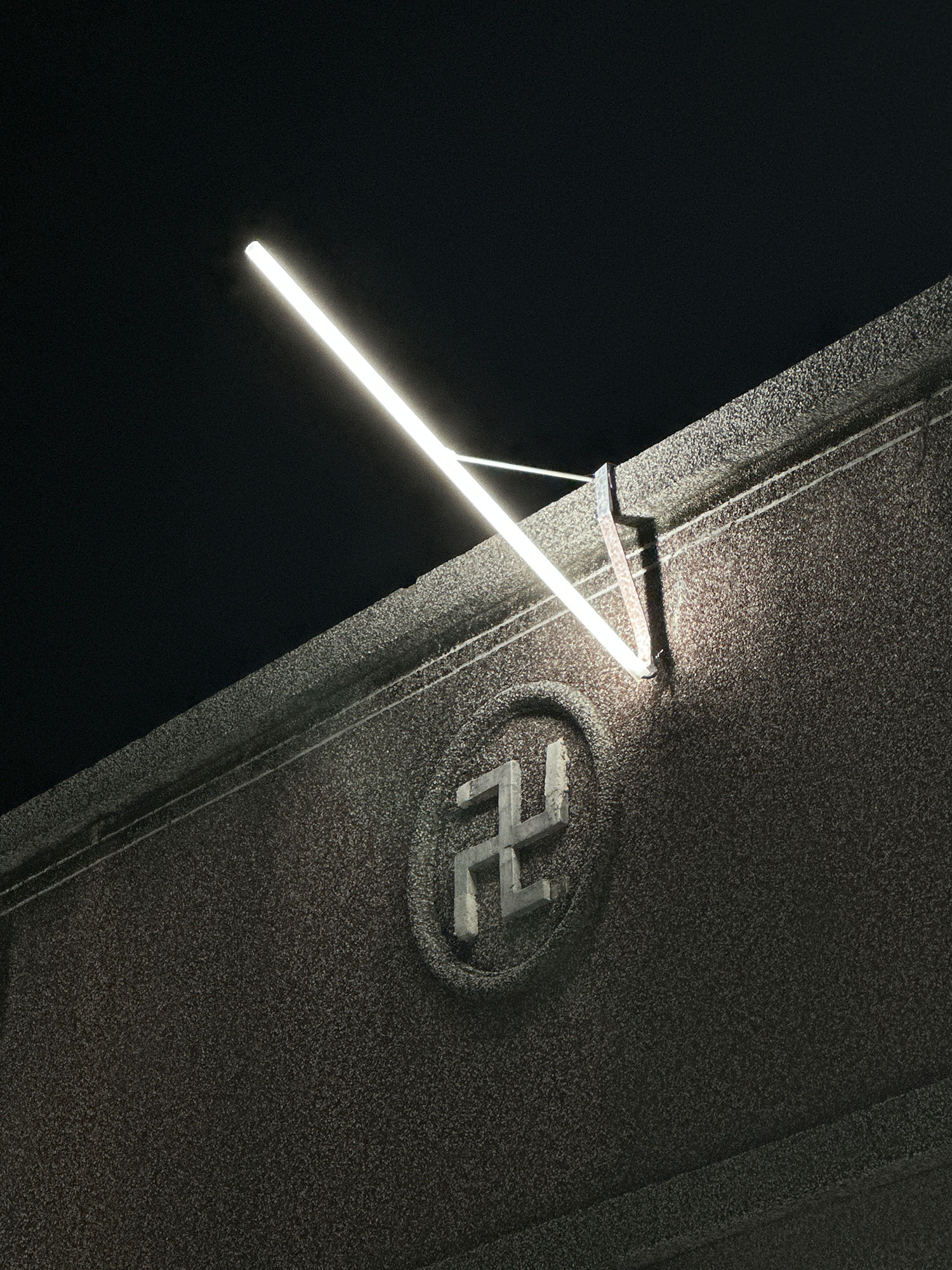
Coinciding with “Halo,” another of Ong’s works is currently illuminating the urban landscape of Amsterdam. As part of the Amsterdam Light Festival, celebrating the city’s 750th anniversary, “Polaris” bathes the city in an ethereal glow. Inspired by the North Star, a timeless symbol of navigation and guidance, “Polaris” transcends its celestial origins to become a captivating landmark, further demonstrating Ong’s mastery of light as a medium for creating impactful and site-specific experiences across the globe.






